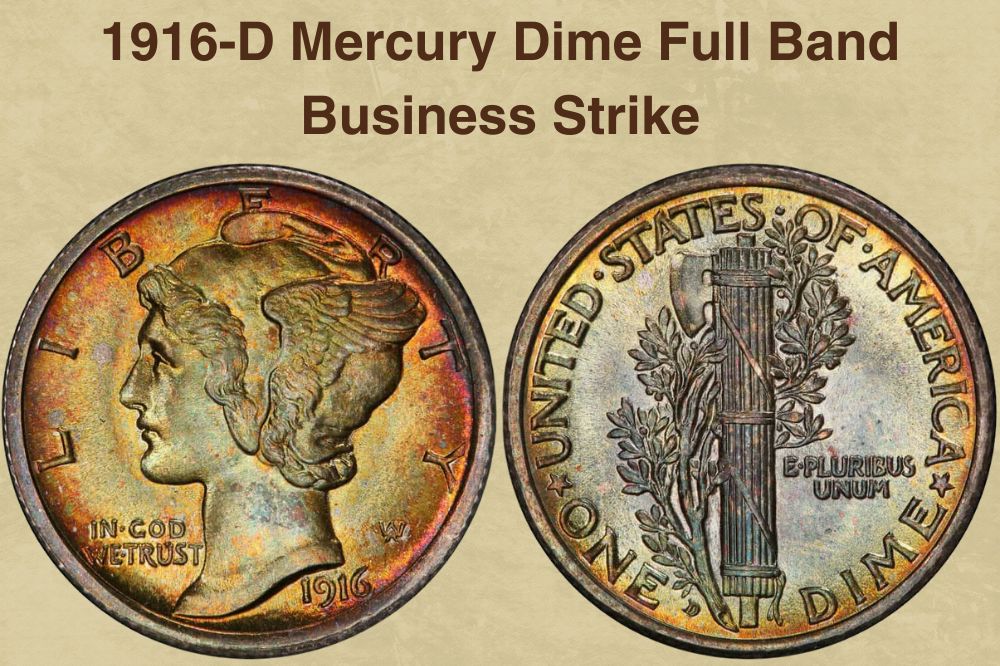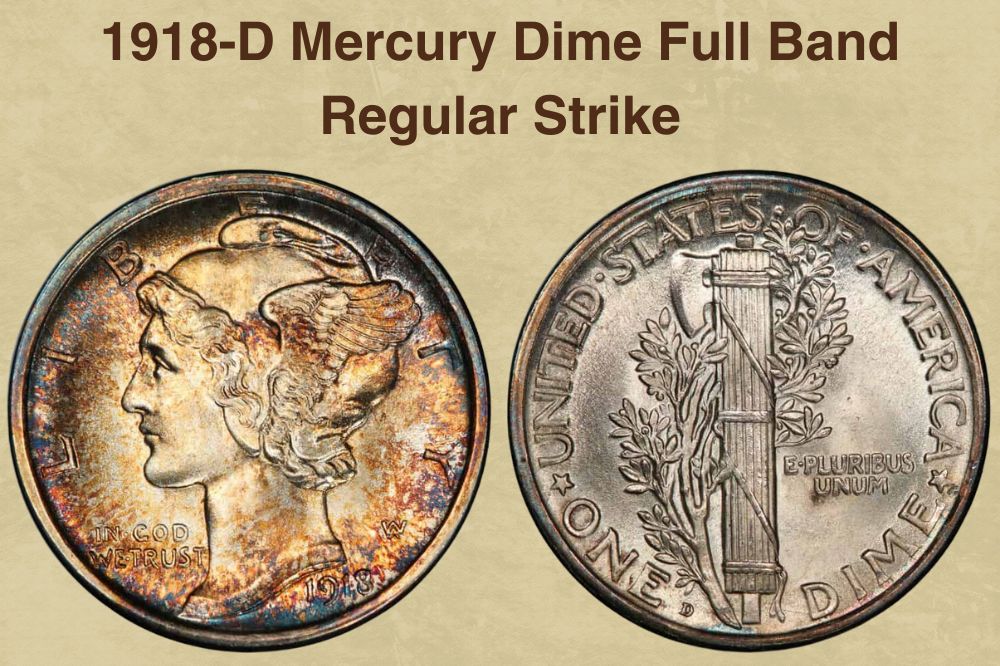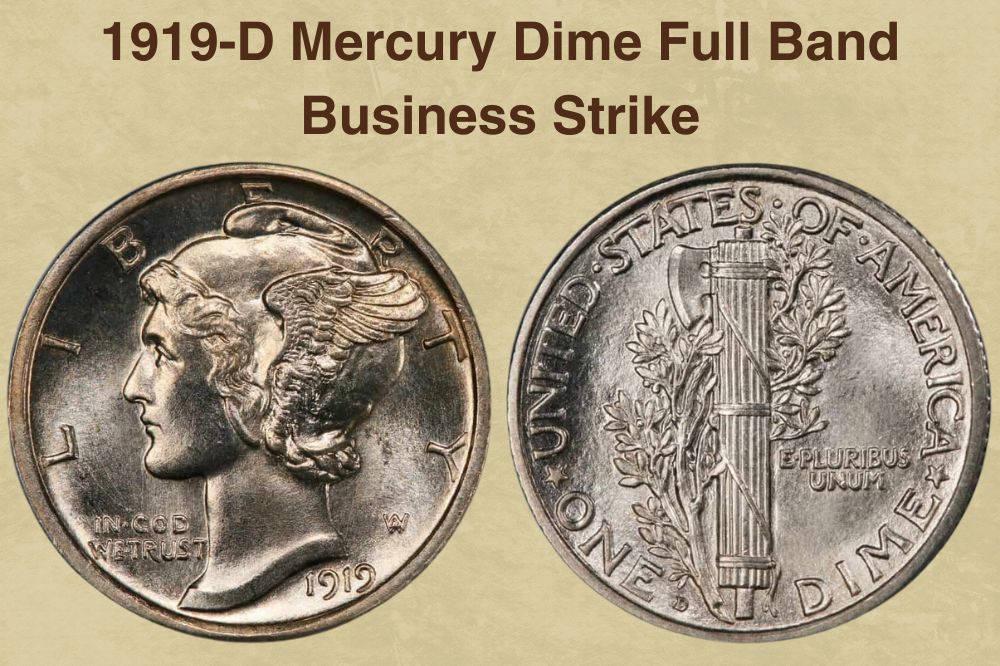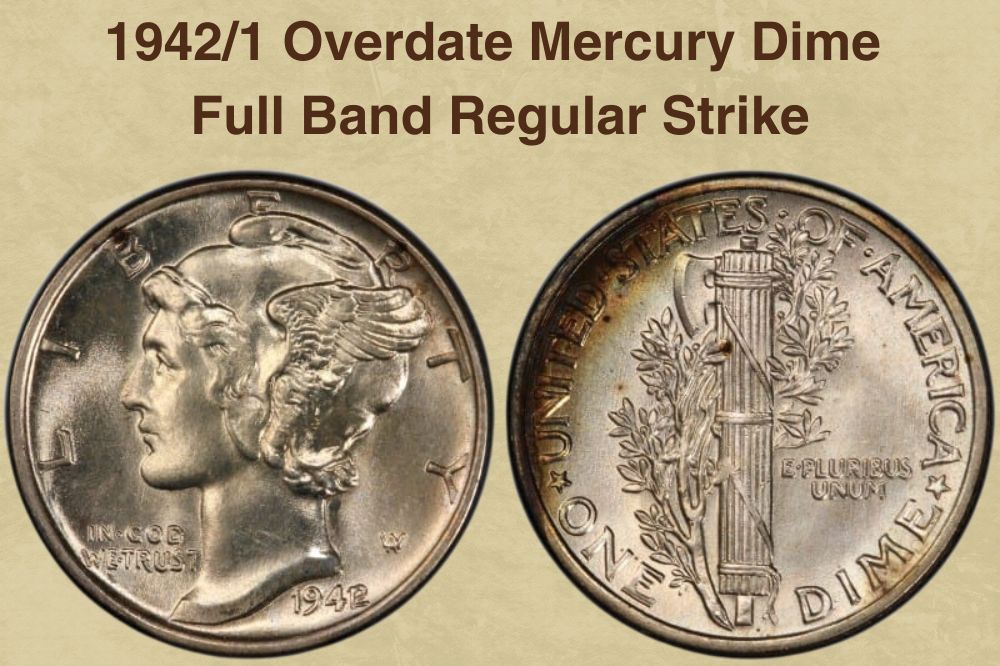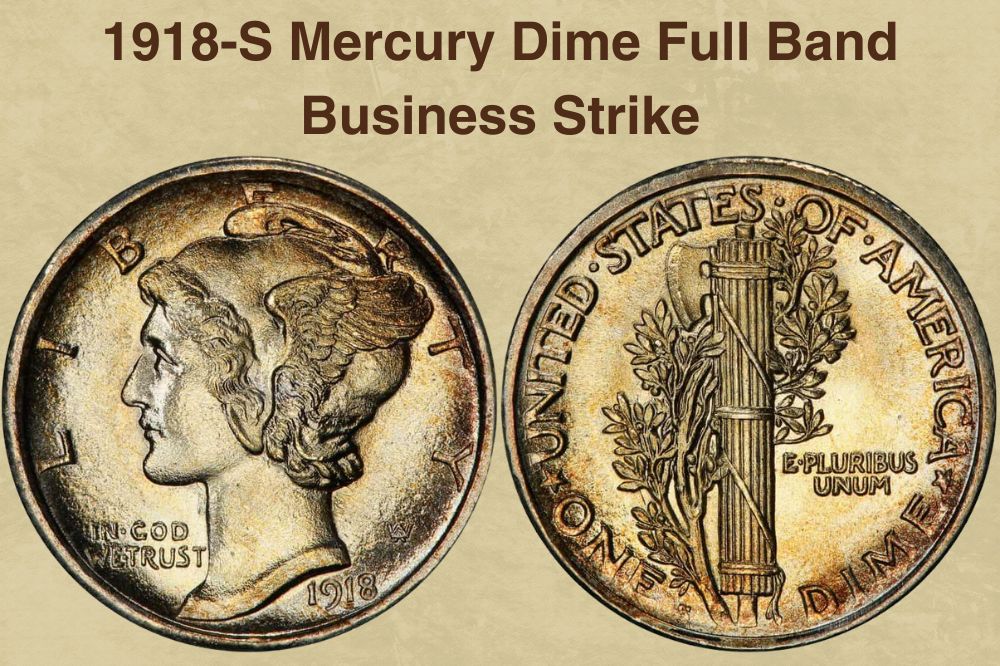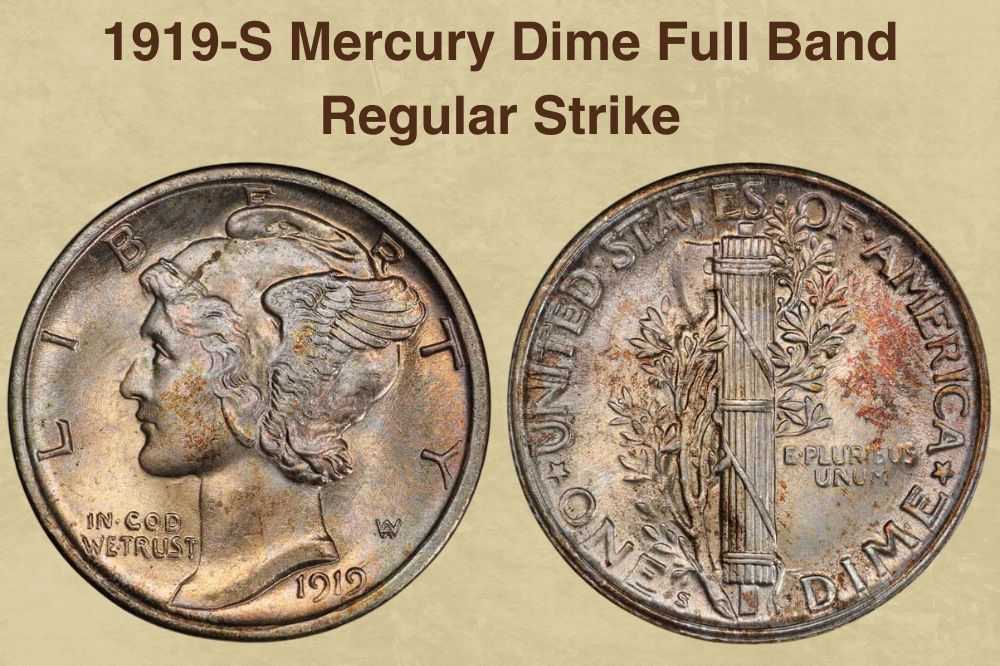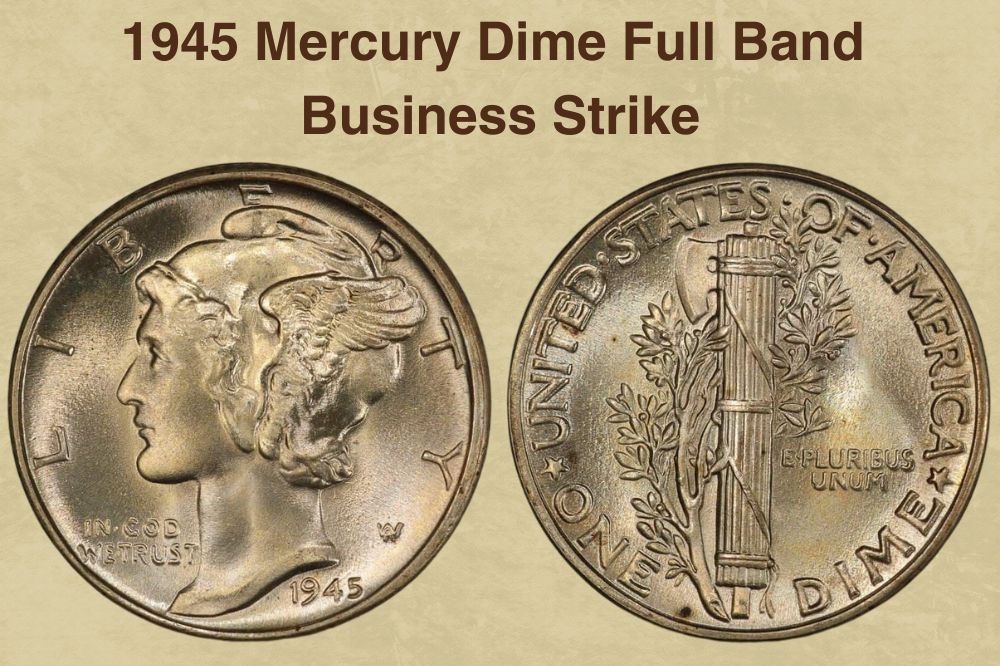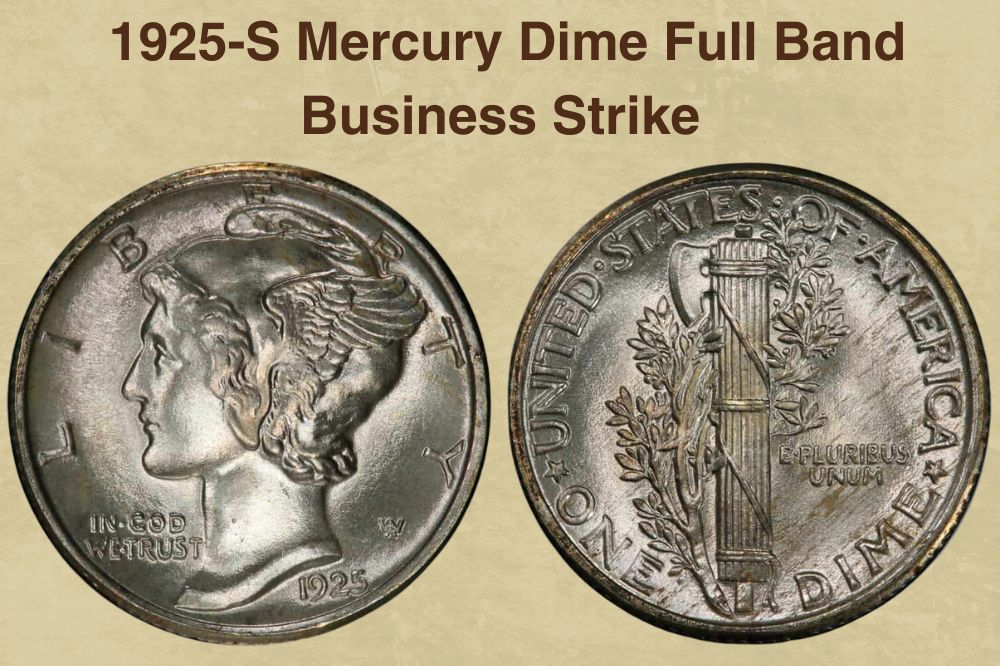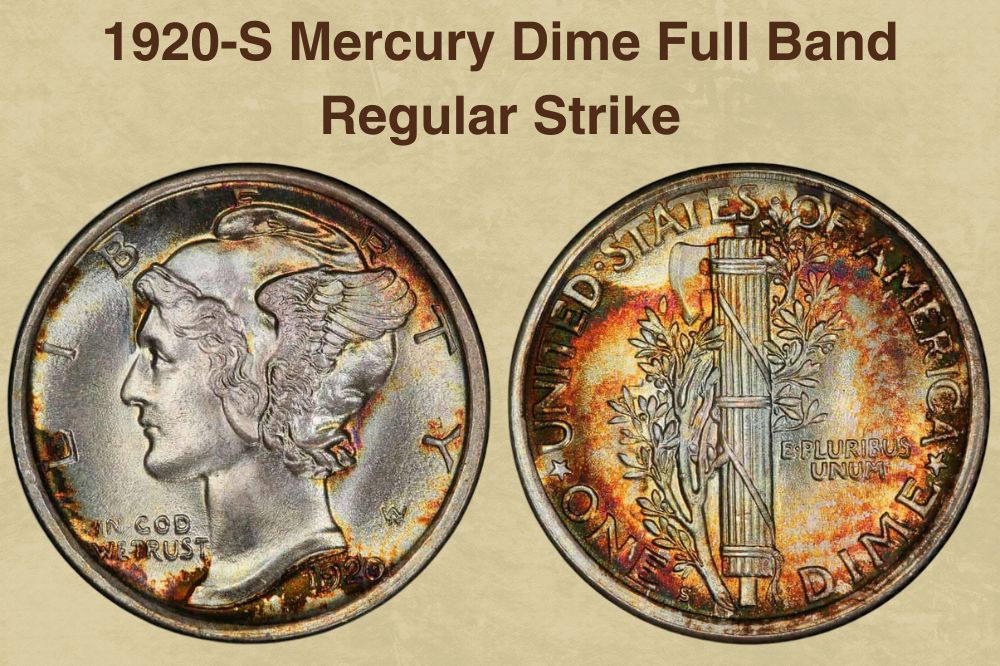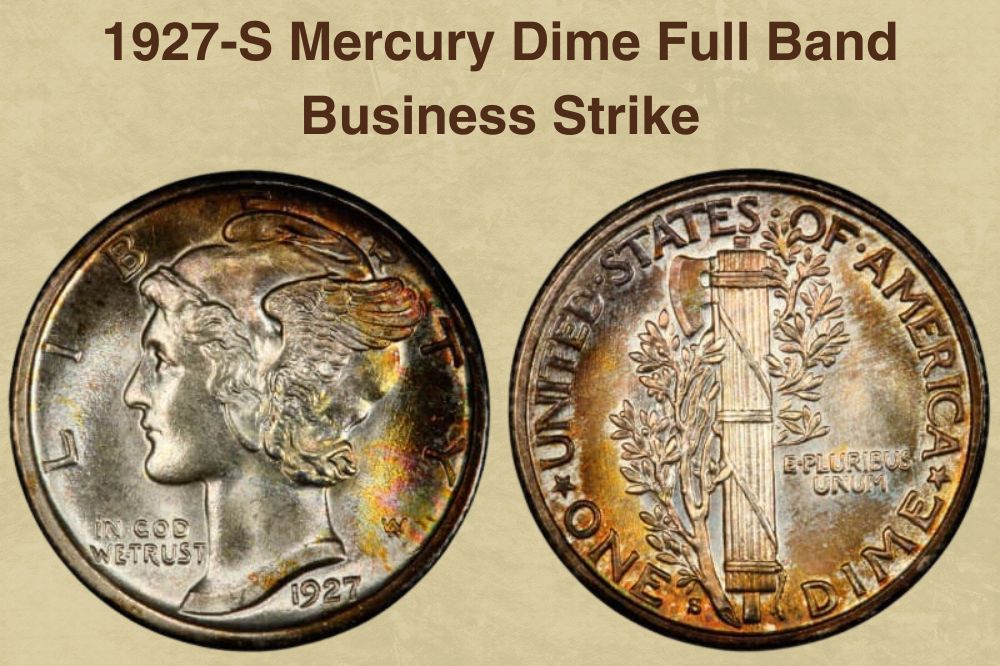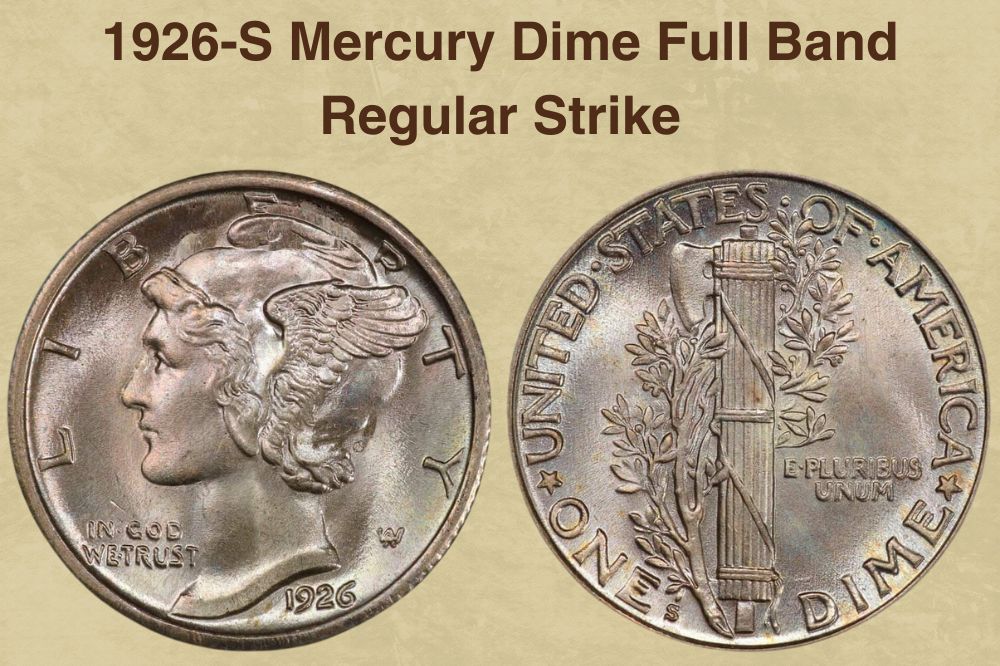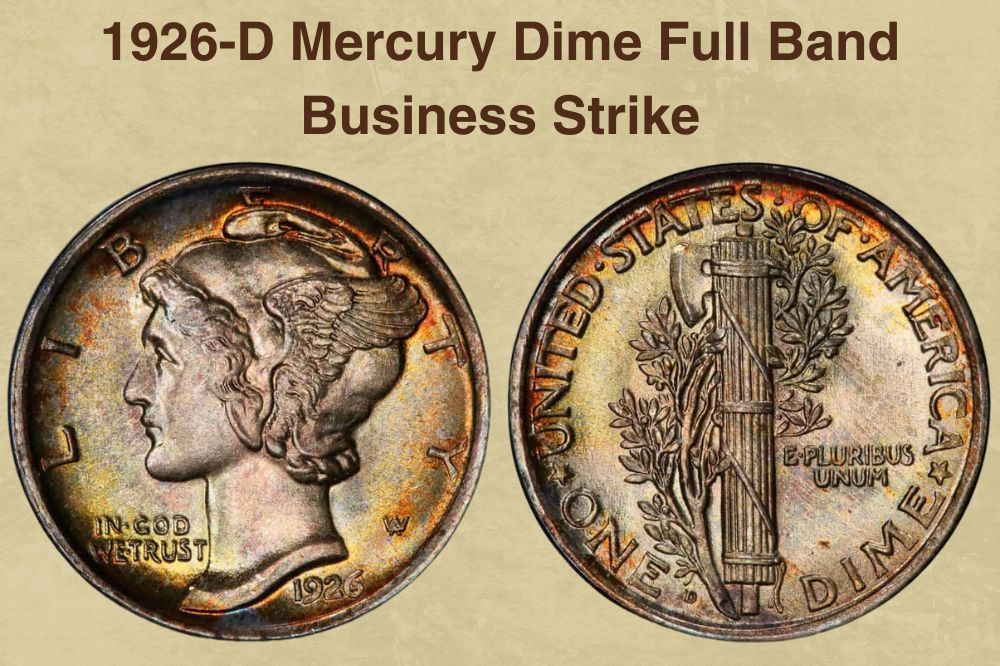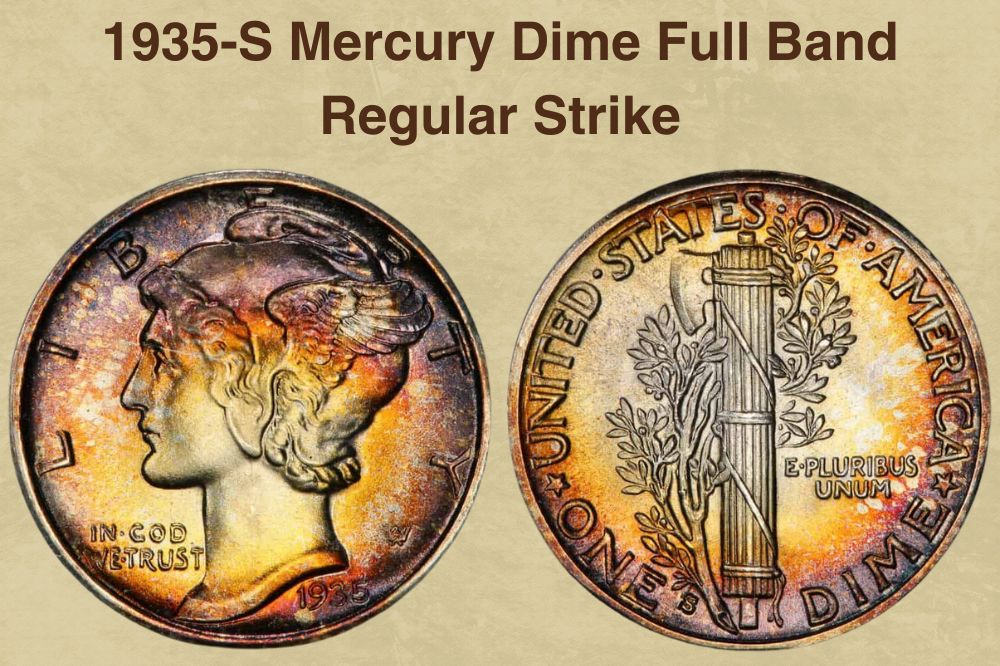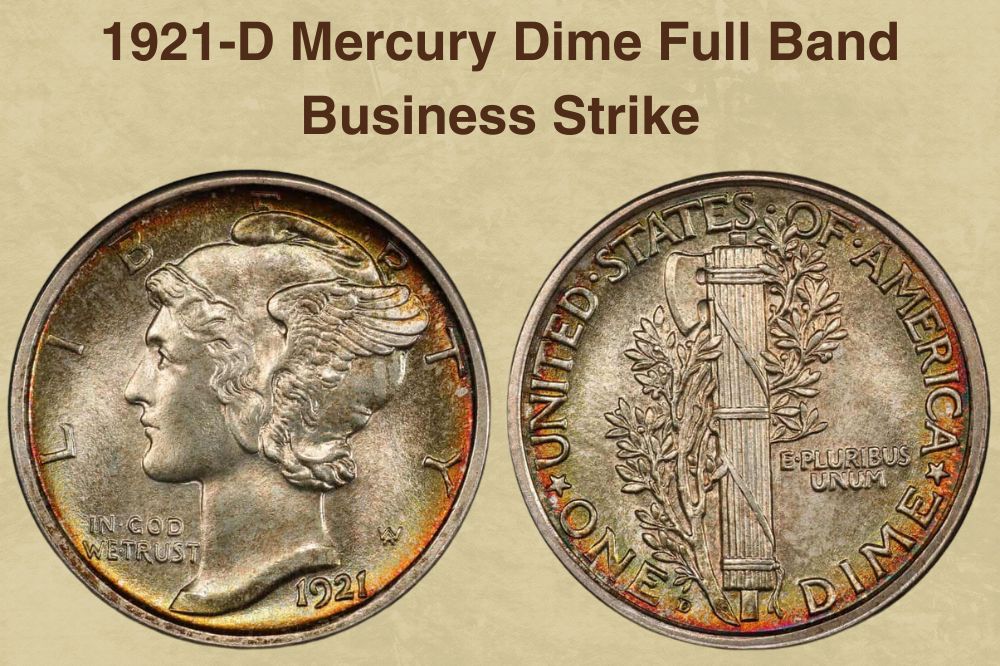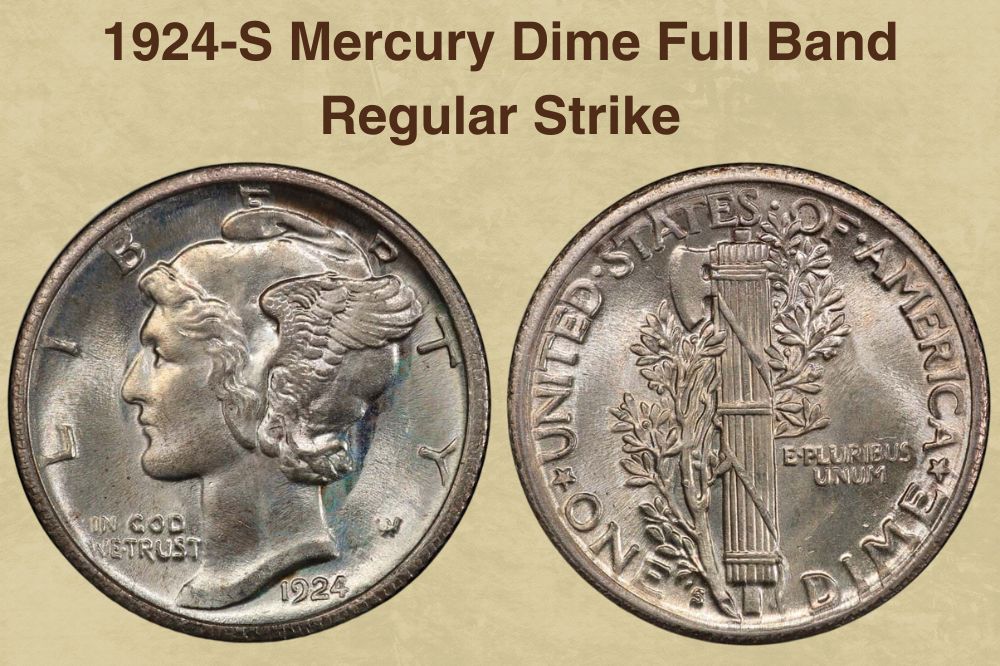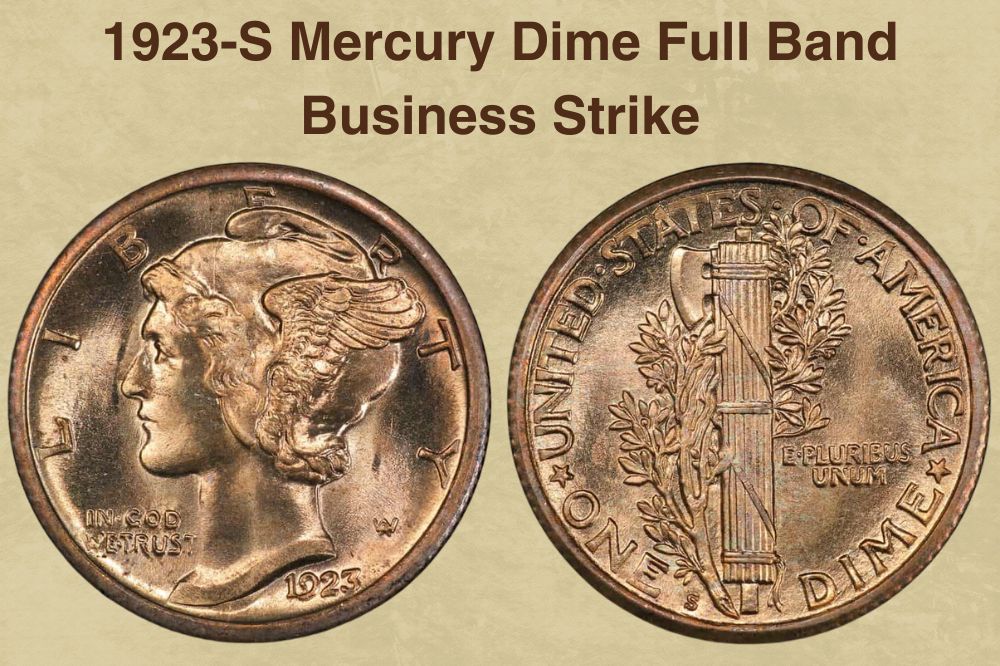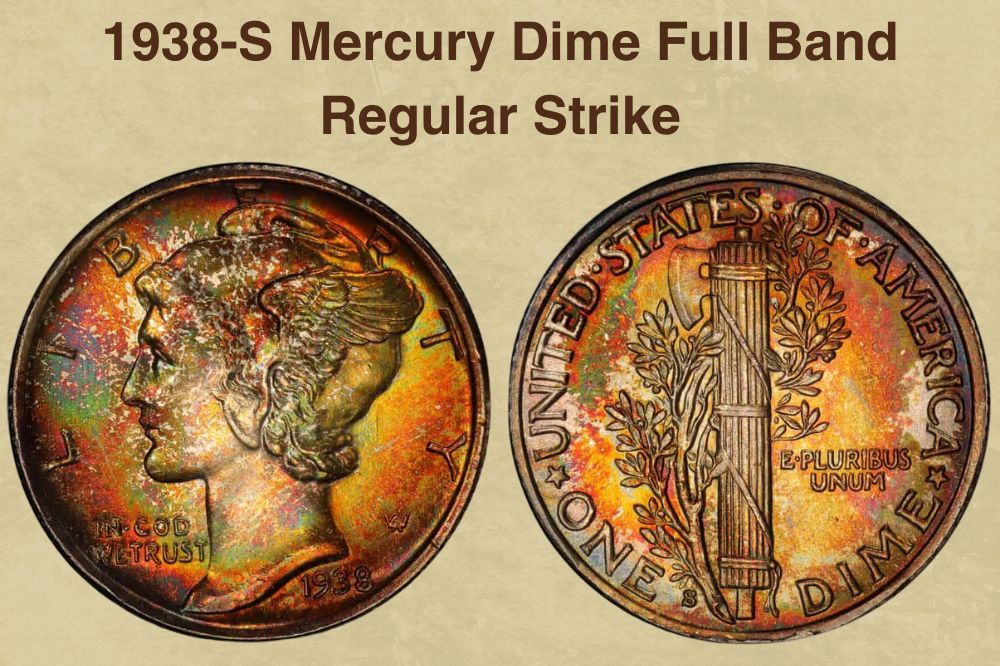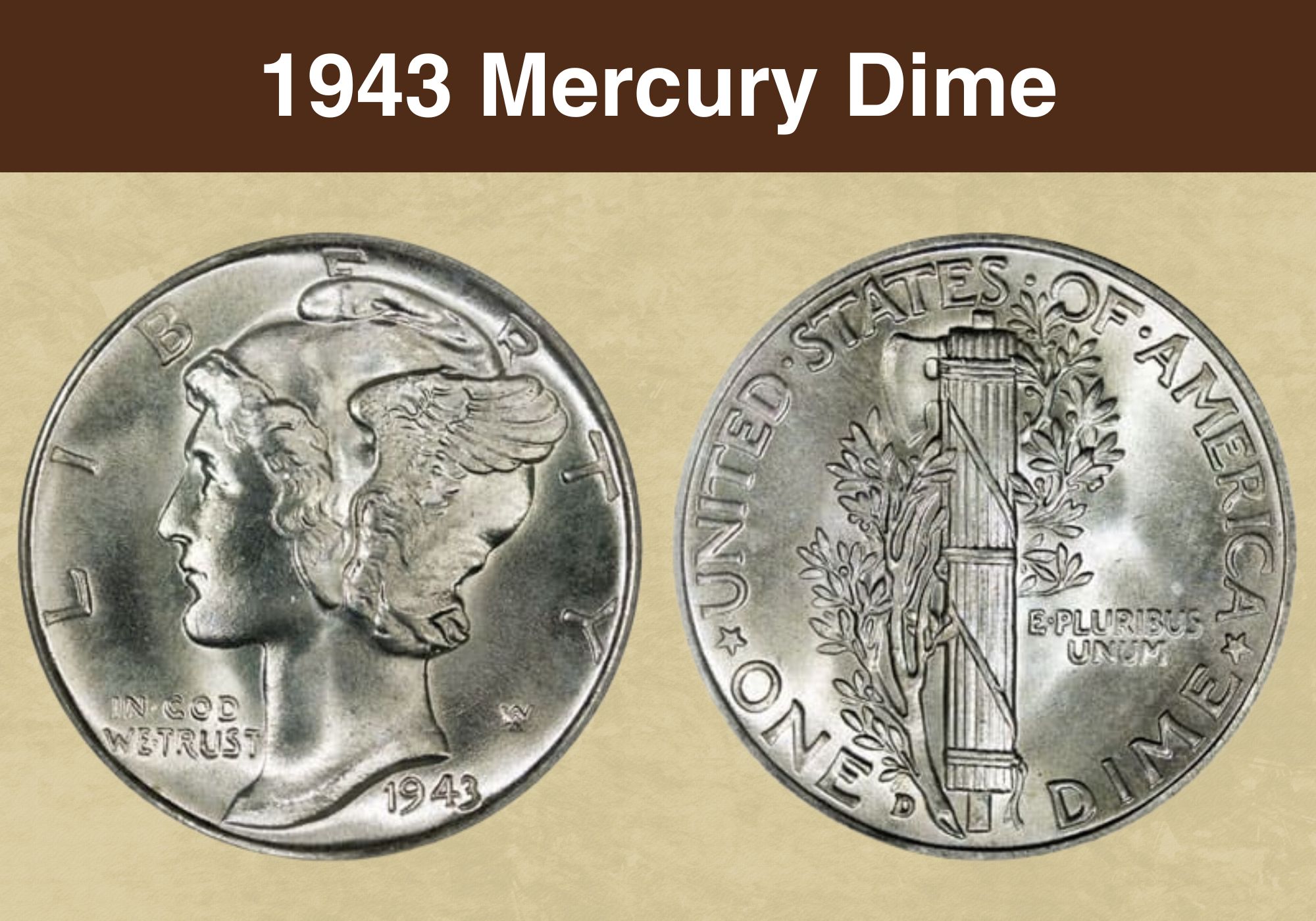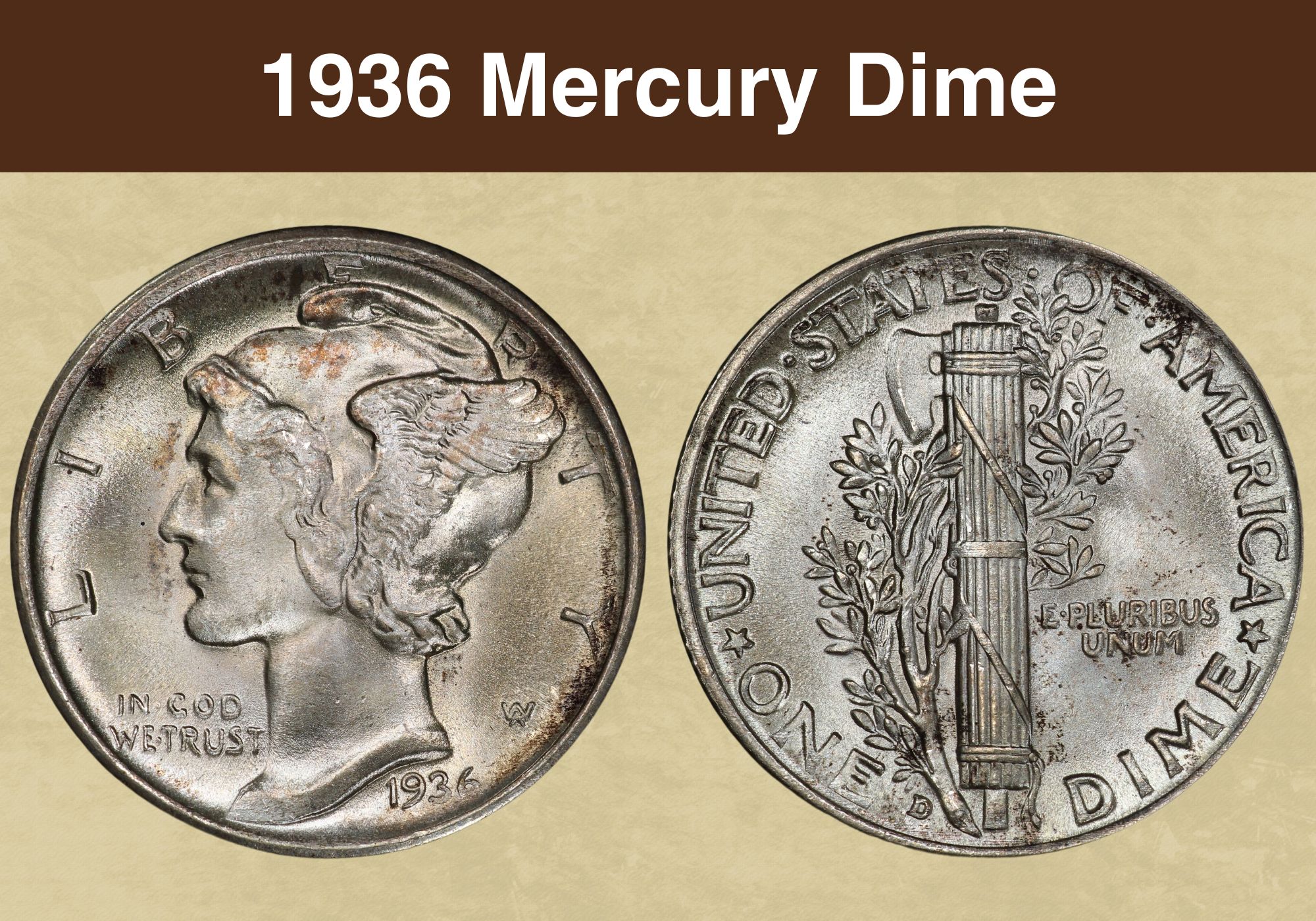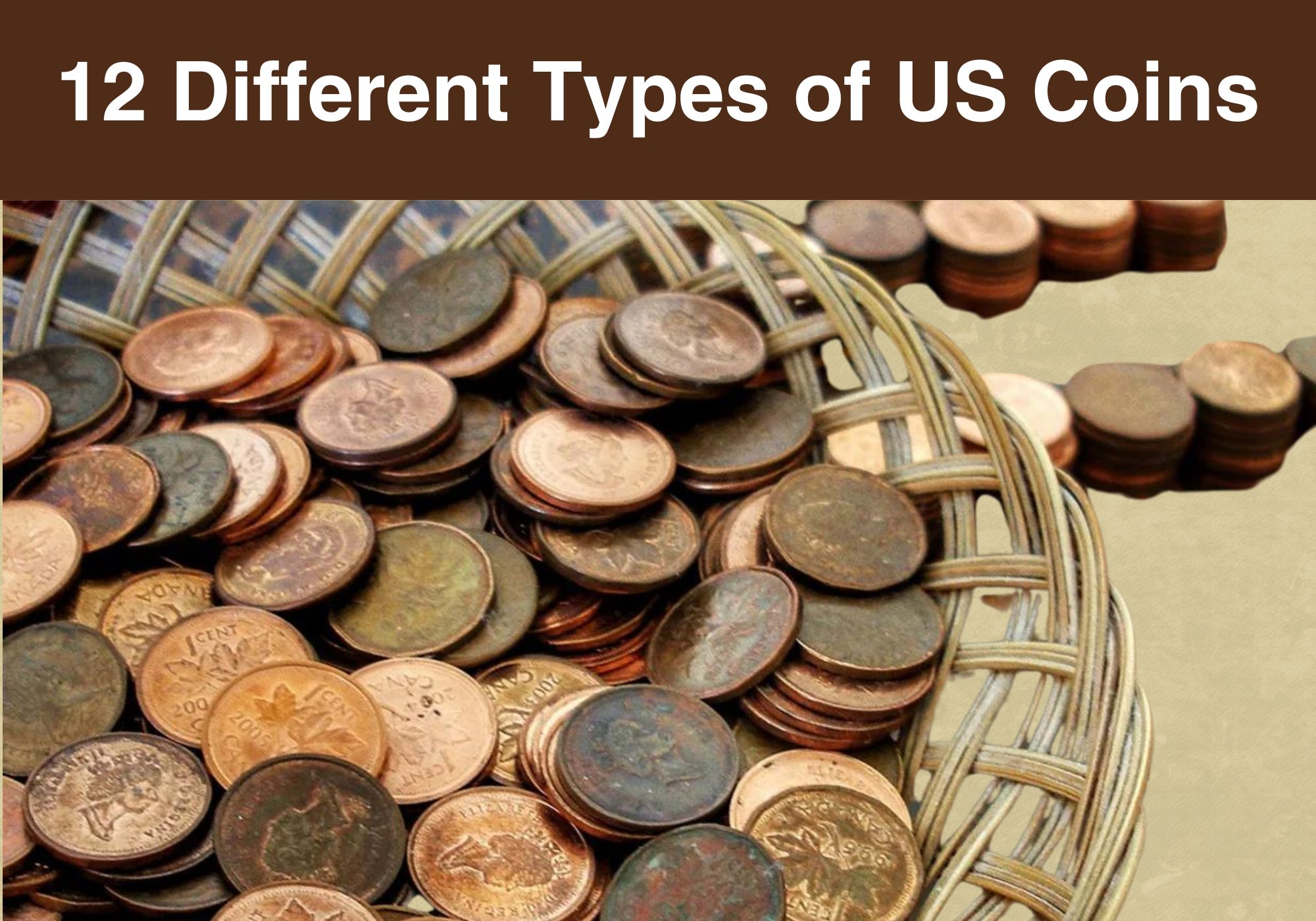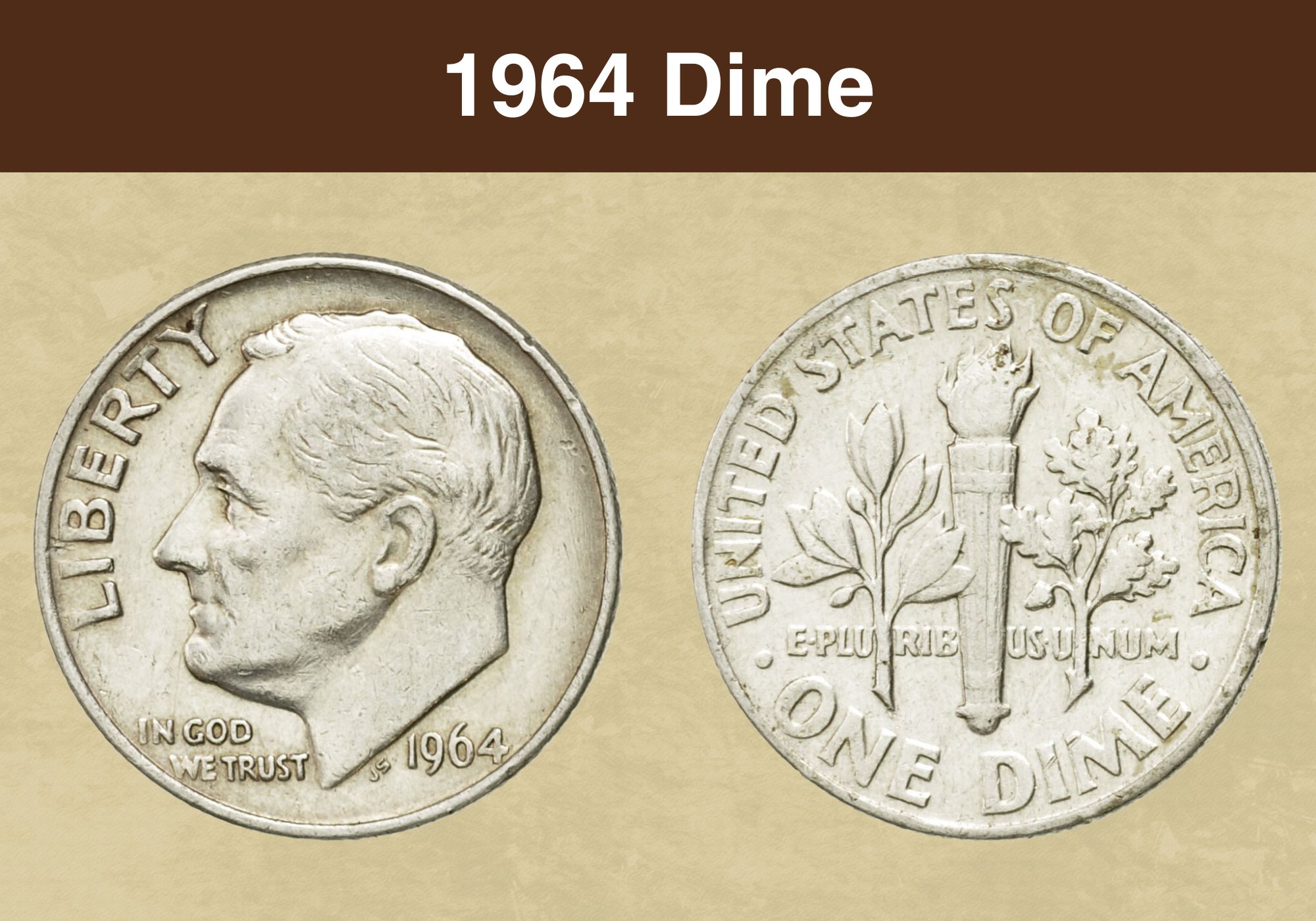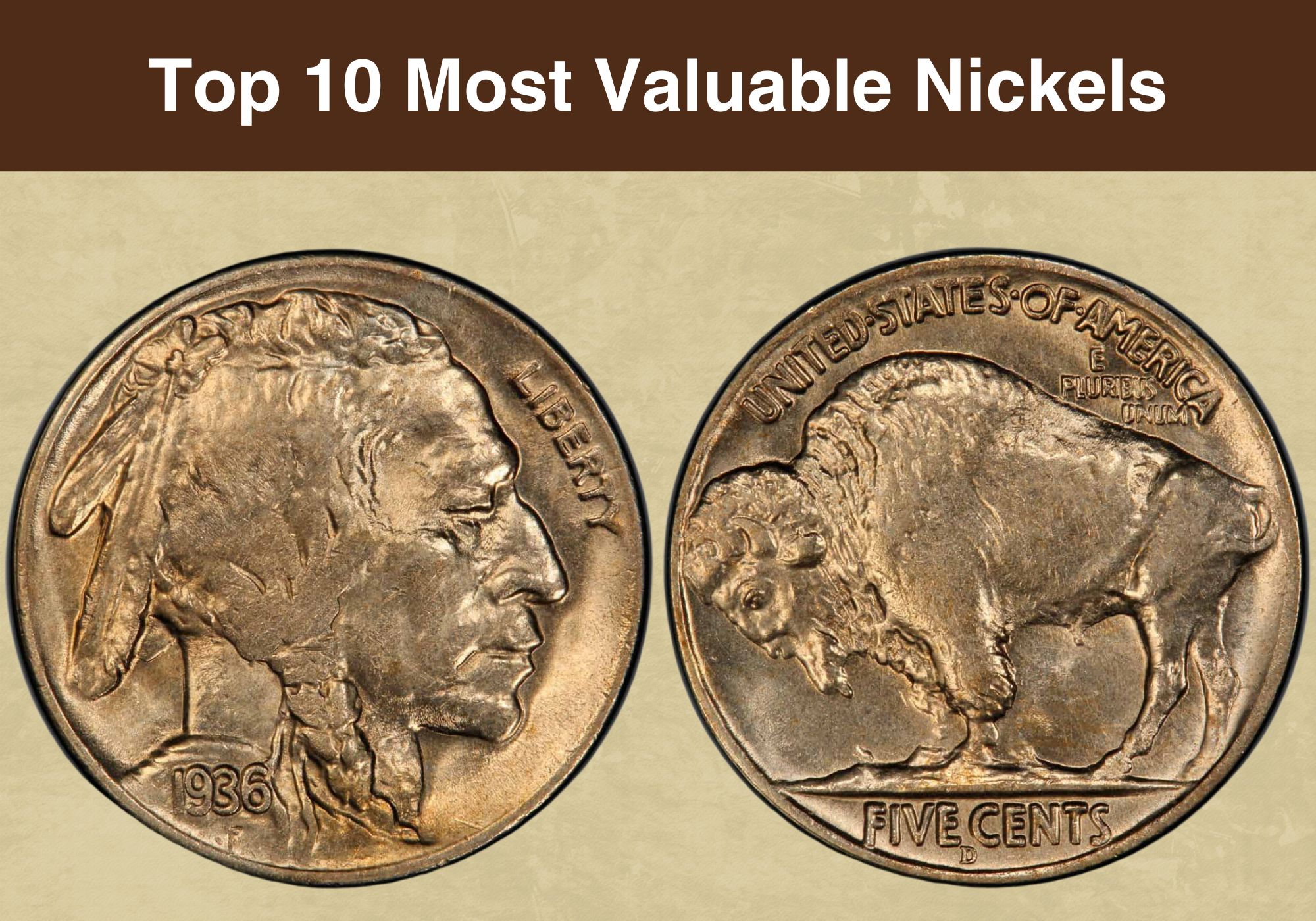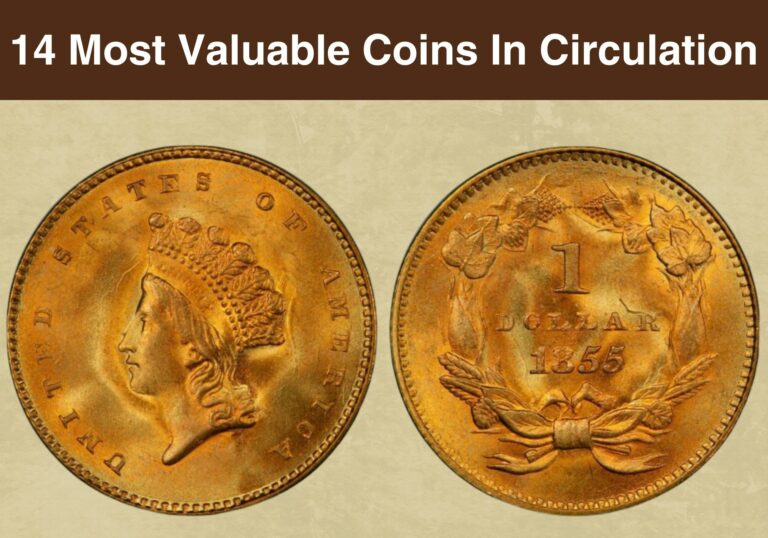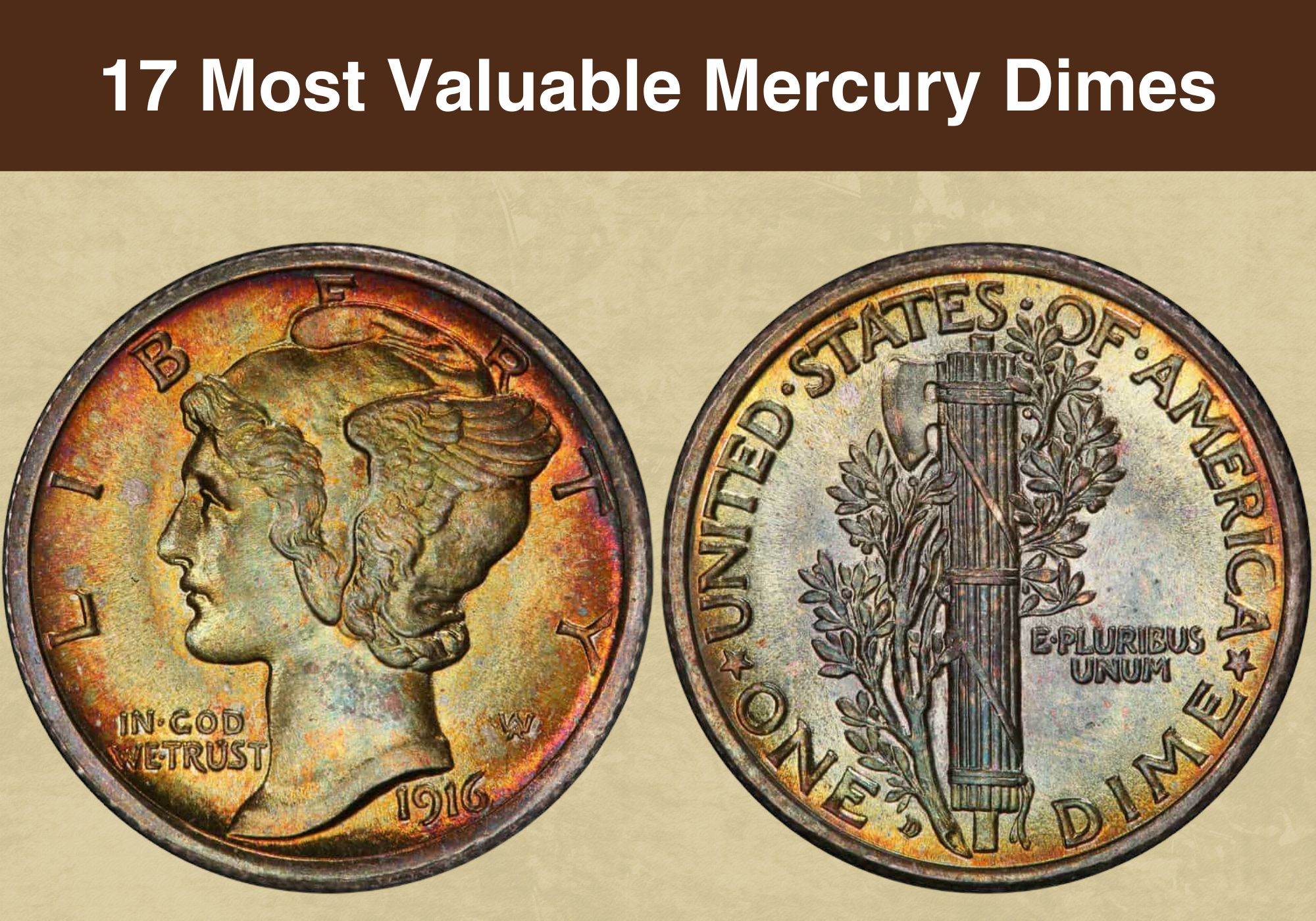
Mercury Dimes are widely ranked among the prettiest American coins ever minted. But did you know the figure on the obverse (that’s the heads side) isn’t Mercury at all?
Let’s take a closer look as we discover the Most Valuable Mercury Dimes. FYI, the FB on Mercury Dimes means Full Band, describing the clarity of the straps behind the coin. FBs are more valuable.
Most Valuable Mercury Dimes worth Money
1. 1916-D Mercury Dime Full Band Business Strike
The real name of the Mercury Dime is the Winged Liberty Dime. But most people call it the Mercury Dime because they think it depicts Mercury, the Roman messenger god who was often seen in a winged helmet. In reality, it shows Lady Liberty wearing a hat with wings.
- Year: 1916
- Mint Mark: Denver
- Grade: MS 67 FB
- Date of Sale: 11th August 2010
- Price: $207,000
The back of the coin was equally confusing. It shows a fasces entwined with an olive branch. A fasces is a bundle of sticks wrapped with a leather strap and attached to a battle axe, but a few people thought it was a golf club, so they nicknamed it the Golf Dime or Battle Axe Dime.
Check 1916 Mercury Dime History, Variety Price Chart & Errors List
2. 1918-D Mercury Dime Full Band Regular Strike
As we clarify the facts, let’s start with the obverse aka the heads side. The artist placed wings on Lady Liberty’s headgear to represent freedom of thought. The hat itself was a Phrygian Cap, sometimes called a Liberty Cap. The goddess of liberty often wears one in her statues.
- Year: 1918
- Mint Mark: Denver
- Grade: MS 67 FB
- Date of Sale: 3rd September 2015
- Price: $182,125
This conical cap was once worn by emancipated slaves and traces its history to Anatolia and Eastern Europe. It was common in Persia, Phrygia, Dacia, Media, Thrace, and the Balkans. During the French and American Revolutions, the hat was co-opted as a symbol of freedom.
Check 1918 Mercury Dime History, Variety Price Chart & Errors List
3. 1919-D Mercury Dime Full Band Business Strike
On early American currency, symbolic versions of Lady Liberty graced the front side. These were made by mint engravers that were government employees. But once commercial artists were commissioned to sculpt coin designs, they often used American women as their muses.
- Year: 1919
- Mint Mark: Denver
- Grade: MS 66 FB
- Date of Sale: 14th January 2019
- Price: $156,000
In the case of the Mercury Dime, the artist asked Elsie Stevens to pose as Lady Liberty. She cut the top off an old stocking and wore it on her head to simulate the Phrygian Cap. Oddly, her identity was masked at first, but it turned out she was one of the artist’s upstairs tenants.
Check 1919 Mercury Dime History, Variety Price Chart & Errors List
4. 1942/1 Overdate Mercury Dime Full Band Regular Strike
Mrs. Stevens was the wife of Wallace Stevens, a popular lawyer, insurance executive, and poet who rented the rooms above the artist with her husband. The artist himself was Adolph Weinman. He was a former student of Augustus Saint-Gaudens, who made the Double Eagle.
- Year: 1942 Over 1941
- Mint Mark: None (Philadelphia)
- Grade: MS 66 FB
- Date of Sale: 3rd January 2018
- Price: $120,000
Saint-Gaudens was the first commercial artist to work on American coins, and several of his assistants and students followed suit, much to the chagrin of in-house mint engravers. They launched a series of gorgeous coins that were a headache to mint due to their intense details.
Check 1942/1 Mercury Dime History, Variety Price Chart & Errors List
5. 1918-S Mercury Dime Full Band Business Strike
These artistic coins typically had high relief points and realistic depictions that needed extra coin strikes. As a result, they went through dies faster, raising expenses at the mint because of all these new dies. But these days, coins are minted digitally so finer detail isn’t an issue.
- Year: 1918
- Mint Mark: San Francisco
- Grade: MS 67 FB
- Date of Sale: 14th January 2019
- Price: $144,000
Despite grumblings at the mint, the Mercury Dime was used from 1916 to 1945. It was only replaced when President Franklin Roosevelt died in office and the public wanted to honor him. He was the 32nd US President, served four terms, and was affectionately known as FDR.
Check 1918 Mercury Dime History, Variety Price Chart & Errors List
6. 1919-S Mercury Dime Full Band Regular Strike
The Mercury Dime itself replaced the Barber Dime as part of President Theodore Roosevelt’s coin beautification program. He started it in 1904 and it was taken up by his successor, President William Howard Taft. They invited popular artists to revamp boring US currency.
- Year: 1919
- Mint Mark: San Francisco
- Grade: MS 66 FB
- Date of Sale: 9th November 2006
- Price: $103,500
According to these presidents, the current coins were dull and uninspired so they needed some fresh outside blood to enhance creativity. In truth, the earlier coins were minted with low costs and practicality in mind while the newer ones were driven by flash and aesthetics.
Check 1919 Mercury Dime History, Variety Price Chart & Errors List
7. 1945 Mercury Dime Full Band Business Strike
This difference in approach often put mint engravers at odds with the outsourced artists. But personality politics played into it as well. After all, government artists are still artists so their temperaments are bound to clash eventually. But Weinman had a lot less drama than others.
- Year: 1945
- Mint Mark: None (Philadelphia)
- Grade: MS 67+ FB
- Date of Sale: March 1st 2018
- Price: $96,000
If anything, his time at the mint went smoothly enough that he was also asked to design the Walking Liberty Half Dollar. And this same design was used on the American Silver Eagle three decades after his death! But for now, let’s focus on the creation of the Mercury Dime.
Check 1945 Mercury Dime History, Variety Price Chart & Errors List
8. 1925-S Mercury Dime Full Band Business Strike
In the late 1800s, some coin designs were only used for a year or two before they were replaced. This caused issues because the mint would have to make fresh dies. Plus, the whole pattern process was expensive. And it probably upset the egos of the coin designers as well.
- Year: 1925
- Mint Mark: San Francisco
- Grade: MS 68 FB
- Date of Sale: 14th January 2019
- Price: $45,600
The process of changing a coin meant voting and lobbying at Congress, which was a whole other mess. To prevent these issues, the Coinage Act of 1890 allowed coins to change after 25 years without Congressional involvement. It wasn’t mandatory but it was much more convenient.
Check 1925 Mercury Dime History, Variety Price Chart & Errors List
9. 1920-S Mercury Dime Full Band Regular Strike
Under the same law, the mint could hire external artists to redesign coins if they felt the in-house engravers were inadequate. This law facilitated the easy transition from the unpopular Barber Coinage designed by Chief Mint Engraver Charles Barber. But he was still involved.
- Year: 1920
- Mint Mark: San Francisco
- Grade: MS 67 FB
- Date of Sale: 14th January 2019
- Price: $72,000
The Mint Director, Edward Leech, mistakenly assumed the coins must be changed. So he ordered a contest to create a new Dollar and new obverses for the Barber Dime, Quarter, and Half Dollar. Barber chose the criteria and contest rules, recommending ten artists to invite.
Check 1920 Mercury Dime History, Variety Price Chart & Errors List
10. 1927-S Mercury Dime Full Band Business Strike
He insisted competition entries must be complete coins in metal form, with low relief and all the legal legends. (The words on a coin e.g. country, denomination, etc. are called legends or mottos). This meant artists had to take weeks or even months to produce usable coin models.
- Year: 1927
- Mint Mark: San Francisco
- Grade: MS 67 FB
- Date of Sale: 1st April 2008
- Price: $63,250
For all this work, the winner would only be paid $500 and all the other applicants wouldn’t be paid. Many took this as an insult and refused to participate. Instead, some were selected as contest judges, which was a conflict of interest in itself. And this created biases in judging.
Check 1927 Mercury Dime History, Variety Price Chart & Errors List
11. 1926-S Mercury Dime Full Band Regular Strike
Since these top artists were (a) not submitting coins, (b) assessing the entries that arrived, and (c) Barber and Saint-Gaudens had clashed before (for various coin-related reasons), they disagreed on everything so most of the pieces submitted by the public were deemed subpar.
- Year: 1926
- Mint Mark: San Francisco
- Grade: MS 67 FB CAC
- Date of Sale: 11th October 2010
- Price: $54,625
Also, Barber had warned the mint that serious artists wouldn’t enter the contest. Maybe that’s what he wanted all along! Whatever his reasons were for disrupting the process, they were effective. The whole affair was an embarrassing and expensive mess for the US Mint.
Check 1926 Mercury Dime History, Variety Price Chart & Errors List
12. 1926-D Mercury Dime Full Band Business Strike
They still needed new coins though, so Barber designed his Barber Coinage. This currency circulated for 25 years even though the public hated it. Then in 1915, the mint decided to get rid of Barber Coinage. Just like the previous occasion, Barber submitted unpopular sketches.
- Year: 1926
- Mint Mark: Denver
- Grade: MS 67 FB
- Date of Sale: 14th January 2019
- Price: $60,000
But to avoid the drama of the prior coin contest, the mint pre-selected three artists to design a new Dime, Quarter, and Half Dollar. In December 1915, they decided on Albin Polasek, Hermon MacNeil, and Adolph Weinman, inviting them to do as many sketches as they liked.
Check 1926 Mercury Dime History, Variety Price Chart & Errors List
13. 1935-S Mercury Dime Full Band Regular Strike
These sculptors drafted designs for the obverse (heads side) and reverse (tails side) of each coin. This allowed the mint to mix and match at will. In the end, Weinman won five sketches (two obverse and three reverse) while MacNeil won one obverse for the quarter (25 cents).
- Year: 1935
- Mint Mark: San Francisco
- Grade: MS 68 FB
- Date of Sale: 14th January 2019
- Price: $90,000
To simplify matters and balance things out, the mint decided to let MacNeil sculpt both the obverse and reverse of his winning coin while Weinman would do the other two. They felt it was too much pressure and responsibility to have Weinman replace all three Barber coins.
Check 1935 Mercury Dime History, Variety Price Chart & Errors List
14. 1921-D Mercury Dime Full Band Business Strike
Differences between the Barber Dime and the Mercury Dime come down to style. Barber was a 3rd Generation medallist, meaning his artistic perspective leaned towards minimalist detail, clean lines, and low relief. These look best on the flat media and small footprint of coinage.
- Year: 1921
- Mint Mark: Denver
- Grade: MS 66+ FB
- Date of Sale: 14th January 2019
- Price: $50,400
Coins like these were also cheaper to make since they only required one or two strikes. As a result, the mint would spend less on mintage and achieve higher seignorage (the difference between a coin’s production cost and its value). This meant more revenue for the US Mint.
Check 1921 Mercury Dime History, Variety Price Chart & Errors List
15. 1924-S Mercury Dime Full Band Regular Strike
Conversely, Weinman was a 3D sculptor trained by Augustus Saint-Gaudens. His work was often a large-scale 360° sculpture that would be appreciated from every angle. This made his work more detailed and life-like with elements of movement and deep emotional expression.
- Year: 1924
- Mint Mark: San Francisco
- Grade: MS 66 FB
- Date of Sale: 11th November 2010
- Price: $32,200
Weinman’s mentor, Saint-Gaudens, was known for his feather-work, which might be why his student factored wings into his depiction of Lady Liberty. And since Weinman fitted so much detail into the coin, it needed multiple extra strikes to ensure everything came out clearly.
Check 1924 Mercury Dime History, Variety Price Chart & Errors List
16. 1923-S Mercury Dime Full Band Business Strike
More strikes meant more dies, more repairs, and more replacements for minting equipment, which all resulted in reduced seignorage. Ordinarily, all this additional expense would make the mint resist the coin and try to phase it out as soon as possible. But it lasted for 29 years!
- Year: 1923
- Mint Mark: San Francisco
- Grade: MS 66 FB
- Date of Sale: 27th September 2018
- Price: $105,750
Its duration in circulation shows how much the public loved this coin, allowing it to ignore its practical implications and hassles. Its popularity even outshone the potential connotations of the fascist imagery on the coin’s back. The fasces remained a positive symbol within the US.
Check 1923 Mercury Dime History, Variety Price Chart & Errors List
17. 1938-S Mercury Dime Full Band Regular Strike
In case that last point puzzled you, the fasces was adopted by the Fascist Party in Italy, so it may have been taken negatively. But on the Mercury Dime, it was seen to represent unity, peace, and strength because the sticks stood for the 50 states held together by an olive sprig.
- Year: 1938
- Mint Mark: San Francisco
- Grade: MS 68+ FB
- Date of Sale: 27th June 2019
- Price: $364,250
As the coin was prepped for production, Barber still presented problems. Mint Director Robert W. Wooley put it down to a clash of artistic temperament. But Barber’s Assistant Engraver, George T. Morgan, worked much better with Weinman, and the coin was successfully minted.
Check 1938 Mercury Dime History, Variety Price Chart & Errors List

